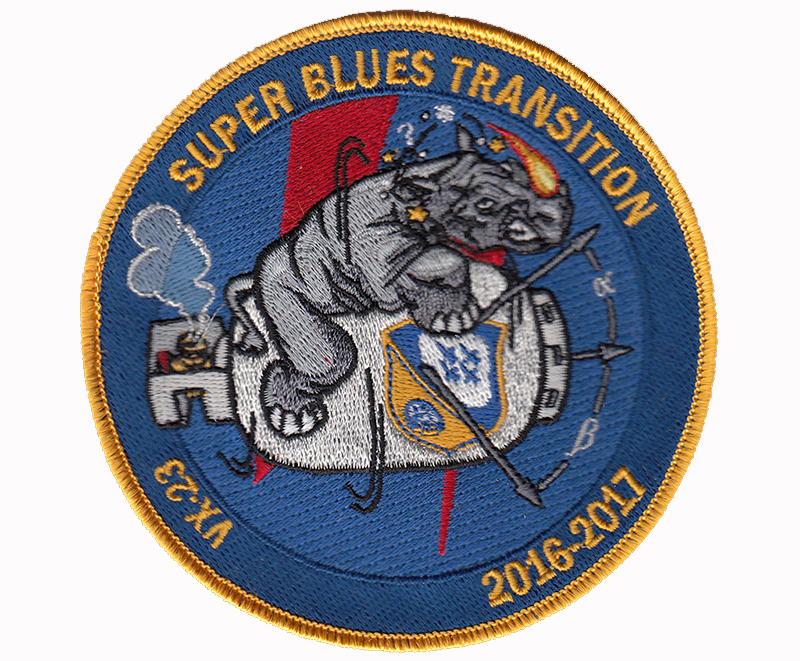The Blue Angels will Receive the F/A-18E/F in 2021. But testing of the Super Hornet is already underway.
As already reported, the Blue Angels will take delivery of the Super Hornets to replace their “Legacy” F/A-18C/Ds in late 2021 in time to work-up for the following airshow season.
However, the Boeing F/A-18E single seat and F/A-18F two-seat Super Hornet that will be flown by the U.S. Navy Flight Demonstration Team will be fleet aircraft modified for airshow demonstration; they will feature biodegradable colored smoke injectors, fuel flow modifications to facilitate extended inverted flight and the addition of 7-pounds of forward hydraulic force on the control stick when maintaining level flight to improve the handling of the aircraft in turbulent, close formation flying.
Interestingly, the testing of the “new” Rhinos (as the Super Hornets are dubbed within the U.S. Navy – yes, exactly as the F-4….), is currently underway and according to our sources it is expected to be complete by the end of this year. The Air Test and Evaluation Squadron Two Three (VX-23), NAVAIR’s largest flight test organization based at NAS Patuzent River, MD, has already produced a patch that you can find on eBay here. Curiously, the “2016-2017” text suggests the VX-23 activities were completed last year even though the testing is currently underway: after investigating this a little, we have found out that the squadron ordered the patches back in 2017, before the testing was postponed to this year.
For this reason the official patch with the “wrong dates” has been around for some time and is probably going to become a collectors must!
Dealing with the VX-23 “Salty Dogs”, here are some details from the Naval Air Warfare Center webpage:
“The squadron’s mission is to support the RDT&E of fixed wing tactical aircraft by providing aircraft and pilot assets, maintenance services, safety oversight and facility support for these efforts. Primary areas of support include flying qualities and performance evaluations, shipboard suitability, propulsion system testing, tactical aircraft mission system testing, ordnance compatibility and ballistic efforts, reliability and maintainability assessments, flight fidelity simulation and flight control software development. The Squadron also provides Government Flight Representatives, test monitoring, chase aircraft support, and facilities for contractor demonstration, validation and development work involving tactical aircraft and associated systems.
The VX-23 workforce — officers (Navy, Marine Corps and foreign nationals), enlisted (Navy and Marine Corps), civilians and contractors — supports the aircraft maintenance, test planning and conduct, safety oversight and support of the squadron’s F/A-18A-D Hornets, F/A-18E/F Super Hornets, EA-18G Growlers, and T-45A/C Goshawk aircraft, and the on-going contractor demonstration efforts with F-35B/C Lighting II aircraft. VX-23 is also supported by hundreds of flight test engineers and technicians provided by the Integrated Systems, Evaluation, Experimentation and Test Department and various contractors.
The squadron conducts more than 3,000 flight operations annually, totaling approximately 4,400 flight hours, much of which involves high-risk flight test. VX-23 conducts operations, both shore based and shipboard, locally at NAS Patuxent River and operates and maintains the TC-7 catapult and MK-7 arresting gear test sites.”
We will continue to follow the Super Blues Transition and provide more details as they becomes available.
Top image credit: ebay User “patchquest”









